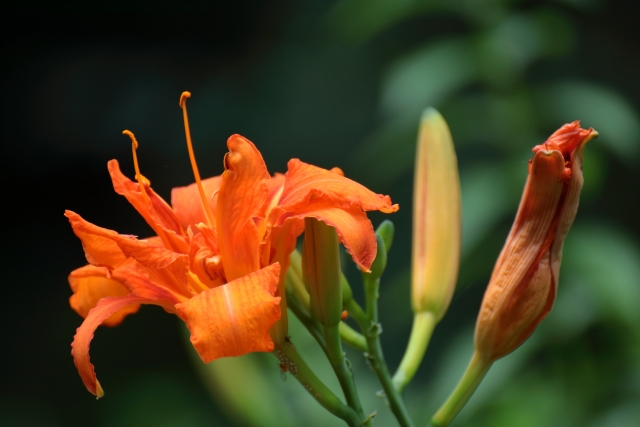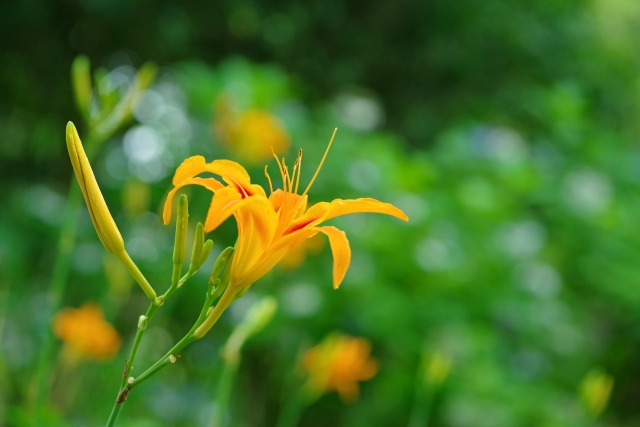忘れ草 Wasure-gusa(Daylily)

忘れ草は、ユリ科ワスレグサ属の多年草のカンゾウです。カンゾウにはキスゲ、ノカンゾウ、ヤブカンゾウなどの種類があります。夏(なつ)に1メートル程度のすらっとした茎の先に、ユリのような花を咲かせます。この花を見ると、辛いことを忘れることができると信じられていました。古くから新芽や若葉は食用として利用されてきました。
- Wasure-gusa(Daylily) is a perennial licorice(hemerocallis) of the genus Daylily of the Liliaceae family. There are various types of licorice. In summer, a lily-like flower blooms on the tip of a slender stem of about 1 meter. It was believed that gazing this flower would allow you to forget about the painfl things. The shoots and young leaves have been used as food since ancient times.
忘れ草を詠んだ歌 Poems including Wasure-gusa

0334: 忘れ草我が紐に付く香具山の古りにし里を忘れむがため
0727: 忘れ草我が下紐に付けたれど醜の醜草言にしありけり
2475: 我が宿の軒にしだ草生ひたれど恋忘れ草見れどいまだ生ひず
3060: 忘れ草我が紐に付く時となく思ひわたれば生けりともなし
3062: 忘れ草垣もしみみに植ゑたれど醜の醜草なほ恋ひにけり
補足 Notes
古代中国では、「萱草(けんそう)」というヤブカンゾウの仲間に憂いや悲しみを忘れさせる力があると信じられていました。これを「忘憂草」と呼んでおり、その花を見ることで憂いを忘れさせるという言い伝えがあり、それが日本にも伝わったとのことです。
- In ancient China, it was believed that "Xuan Cao" (萱草), a plant related to the daylily (Yabu Kanzō), had the power to make people forget their worries and sorrows. This plant was called "Wàng Yōu Cǎo"(忘憂草), and there was a belief that simply looking at its flowers could help alleviate sadness. This belief is said to have then spread to Japan.